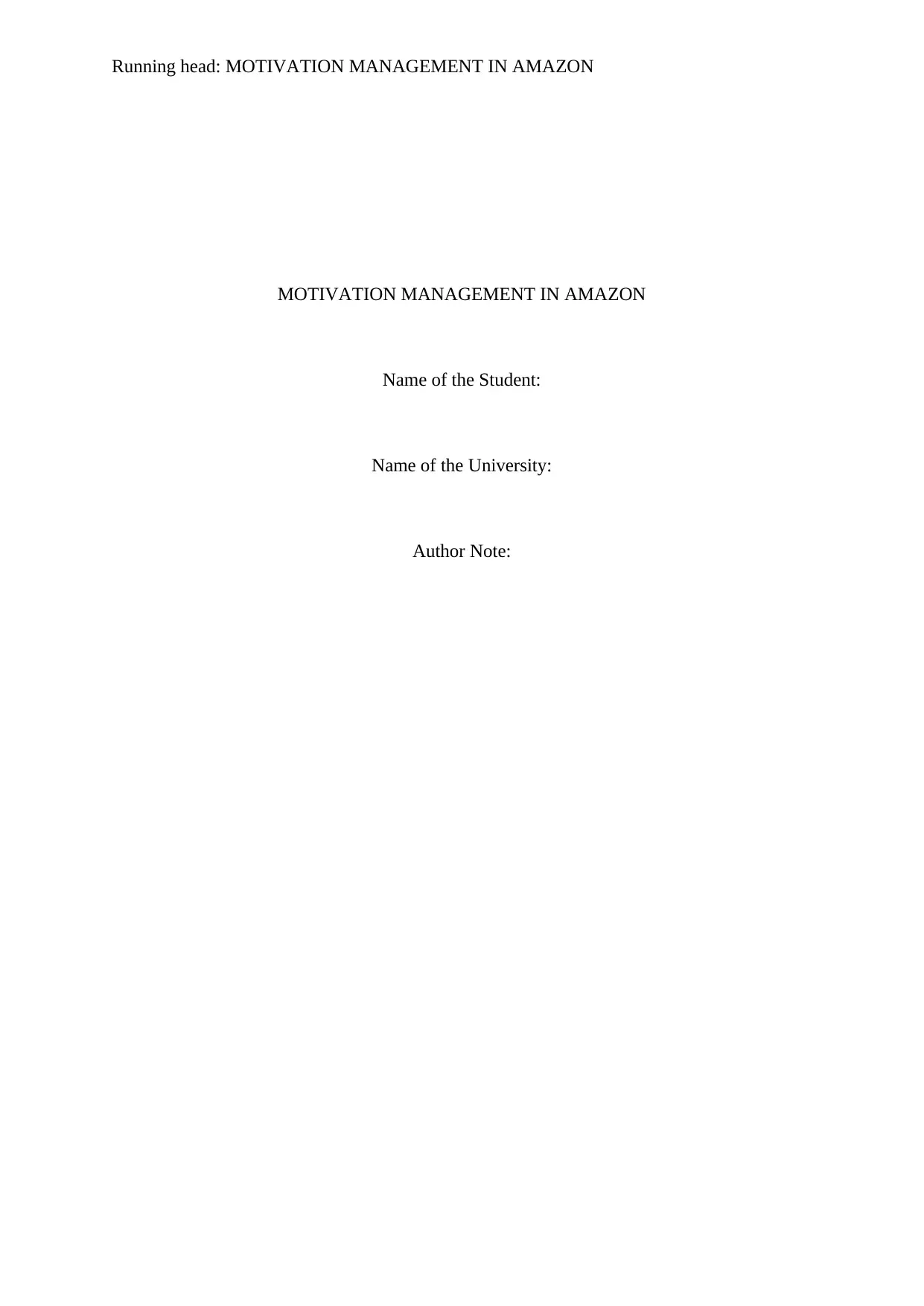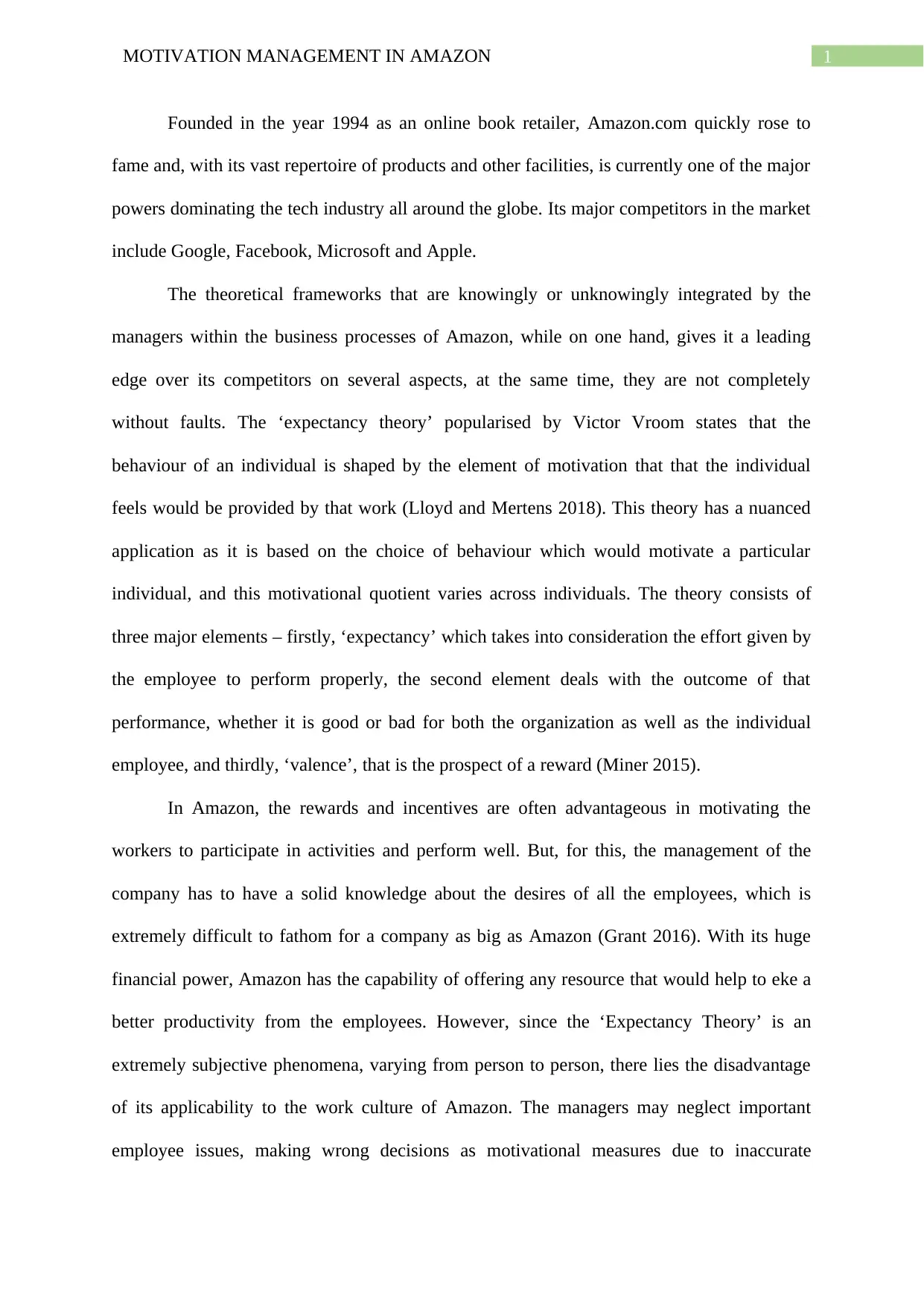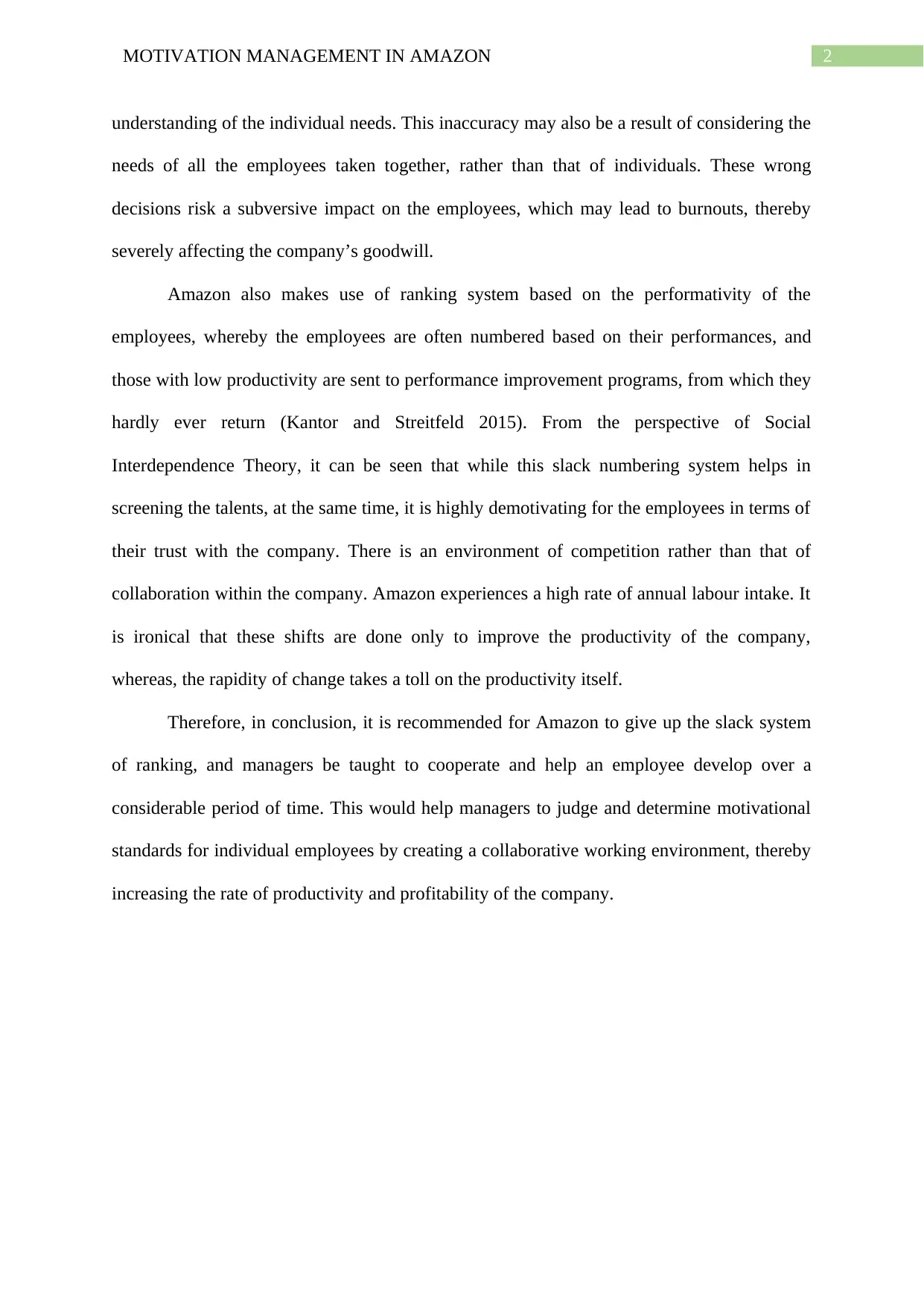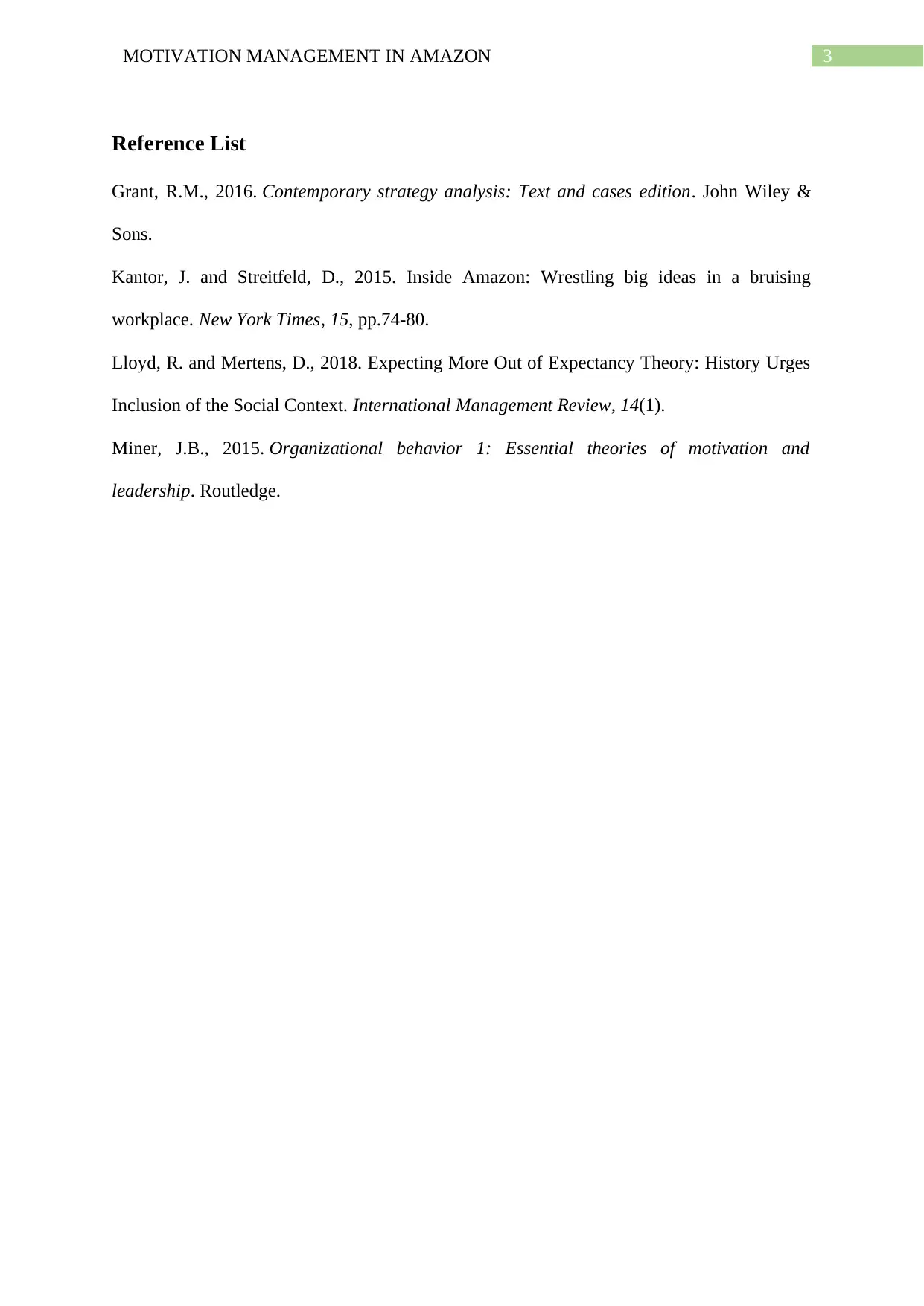A Study of Motivation Management and its Impact on Amazon
VerifiedAdded on 2023/06/07
|4
|813
|83
Essay
AI Summary
This essay examines motivation management strategies employed by Amazon, focusing on the application of expectancy theory and social interdependence theory. It discusses how Amazon's approach, including its ranking system, impacts employee motivation and productivity. While the company's financial power allows for various incentives, the subjective nature of motivation, as highlighted by expectancy theory, presents challenges. The essay critiques Amazon's performance-based ranking system, suggesting it fosters competition rather than collaboration, leading to high labor turnover and potentially hindering overall productivity. The essay concludes by recommending a shift away from the ranking system towards a more collaborative environment where managers can better understand and address individual employee needs, ultimately improving productivity and profitability.
1 out of 4









![[object Object]](/_next/static/media/star-bottom.7253800d.svg)